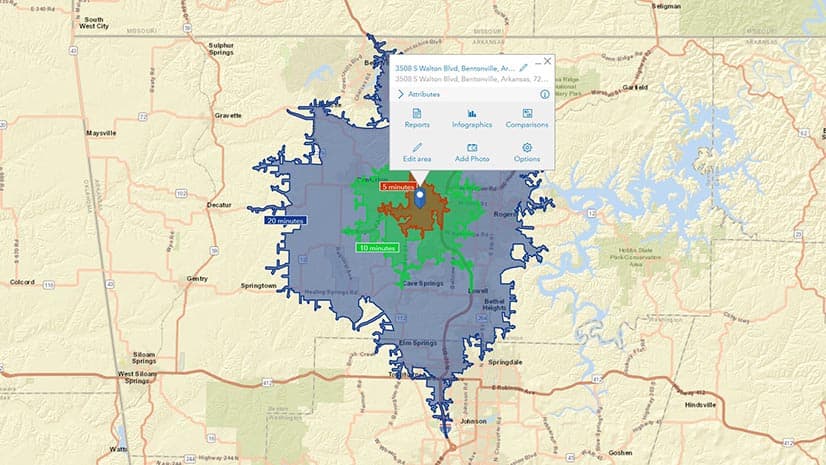Today’s workforce feels more mobile than ever. In part, that’s because being in the optimal place for a given skill set makes a huge difference—for some professionals, it can more than double their salary, especially when cost of living is factored in.
In a tight talent market, executives need to be mindful of workforce mobility within their companies and industries and stay ahead of trends.
TechCrunch recently profiled a startup that matches professionals with locations that offer them better economic opportunities. Called Placement, the company focuses on two demographics:
- Small-city residents whose skills are in higher demand elsewhere
- People living in expensive locales who would benefit from relocating to a new city with a lower cost of living—even if they made the same salary or less.
With services like Placement’s enticing people to relocate, industry leaders can address the shift strategically by using location intelligence to identify and connect with talent. Businesses and cities that don’t may literally be left behind.
Aligning Interests for Mobility
The Placement team creates its own brand of location intelligence by identifying growing but still affordable cities and places where certain jobs are worth more than they are elsewhere.
But uprooting to a new location is a big decision—one many people shy away from. Placement aims to reduce fear and guesswork by flashing salary numbers that highlight the benefits of the move.
Placement’s team performs job research and cost-of-living calculations for clients and offers interview coaching, résumé help, and even a relocation stipend. In return, clients promise the startup 10 percent of their earnings for a fixed period of time, provided they secure a higher adjusted income. The bigger the salary increase, the more both the client and the company benefit.
Talent in Motion
Setting the stage for the work of Placement and its peers are several trends in workforce mobility. Cities are experiencing unprecedented demographic shifts and aging populations. People are more informed and socially connected than ever—more aware of how their cost of living and lifestyle amenities compare with those elsewhere. Many are watching housing costs soar. And they’re realizing that technology can keep them connected—albeit with some limitations—to family, friends, and even employers, no matter where they are.
In other words, business leaders and economic developers should take note: it will only get easier for people to switch jobs and locations. Executives can get ahead of the shift by analyzing locations in the context of the talent they want to attract. Location intelligence, powered by geographic information system (GIS) technology, can reveal the best areas to start a business and pinpoint the behavioral demographics of a population to uncover what types of amenities its members consider meaningful.
Cities that work to build attractive communities—and aggressively address social issues—will also be better positioned to thrive. Proactive leaders in some cities are already offering programs that pay professionals to move, a movement likely to increase workforce mobility. And they’re doubling down by making their cities more desirable, adding attractions like green spaces and music venues.
Cities are also investing in economic gardening to help businesses grow and strengthen local economies. Civic leaders do this by sharing location intelligence with business owners, using smart maps to reveal where target customers are and suggest valuable ways to connect with them.
While technology is helping workers become more mobile, near-historic lows in unemployment rates are making workers more powerful. Location has always mattered to working professionals, but the question of where to work is now becoming at once simpler and more complex. The more location intelligent business owners and city leaders become, the better able they will be to capture the benefits of workforce mobility.
The Esri Brief
Trending insights from WhereNext and other leading publicationsTrending articles

December 5, 2024 |

July 25, 2023 |

November 12, 2018 |

February 1, 2022 |

July 29, 2025 |

July 14, 2025 |





